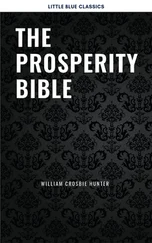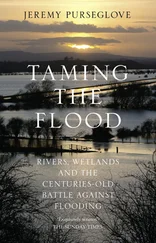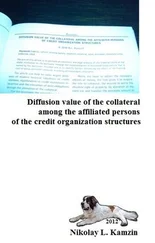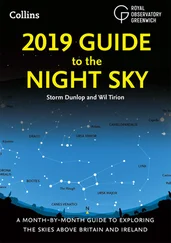47. White House Office of the Press Secretary, “Statement by the President on the Supreme Court’s Ruling on Arizona v. the United States,” June 25, 2012.
48. D. Gelernter, “Feminism and the English language,” Weekly Standard, March 3, 2008; G. K. Pullum, “Lying feminist ideologues wreck English language, says Yale prof,” Language Log, 2008, http://itre.cis.upenn.edu/~myl /languagelog/archives/005423.html.
49. Foertsch & Gernsbacher, 1997.
50. From G. K. Pullum, “Lying feminist ideologues wreck English language, says Yale prof,” Language Log, 2008, http://itre.cis.upenn.edu/~myl /languagelog/archives/005423.html, and Merriam-Webster’s Dictionary of English Usage, 1994.
51. Foertsch & Gernsbacher, 1997.
52. From G. J. Stigler, “The intellectual and the market place,” Selected Papers No. 3, Graduate School of Business, University of Chicago, 1967.
53. H. Churchyard, “Everyone loves their Jane Austen,” http://www.crossmyt.com/hc/linghebr/austheir.html.
54. G. K. Pullum, “Singular they with known sex,” Language Log, 2006, http://itre.cis.upenn.edu/~myl/languagelog/archives/002742.html.
55. Pinker, 1994, chap. 12.
56. Foertsch & Gernsbacher, 1997; Sanforth & Filik, 2007; M. Liberman, “Prescriptivist science,” Language Log, 2008, http://languagelog.ldc.upenn.edu/nll/?p=199.
57. Huddleston & Pullum, 2002, pp. 608–609.
58. Nunberg, 1990; Nunberg, Briscoe, & Huddleston, 2002.
59. Truss, 2003; L. Menand, “Bad comma,” New Yorker, June 28, 2004; Crystal, 2006; J. Mullan, “The war of the commas,” The Guardian, July 1, 2004, http://www.theguardian.com/books/2004/jul/02/referenceandlanguages .johnmullan.
60. Huddleston & Pullum, 2002; Huddleston & Pullum, 2005, p. 188.
61. Lunsford, 2006; Lunsford & Lunsford, 2008; B. Yagoda, “The most comma mistakes,” New York Times, May 21, 2012; B. Yagoda, “Fanfare for the comma man,” New York Times, April 9, 2012.
62. B. Yagoda, “Fanfare for the comma man,” New York Times, April 9, 2012.
63. M. Norris, “In defense of ‘nutty’ commas,” New Yorker, April 12, 2010.
64. Lunsford, 2006; Lunsford & Lunsford, 2008; B. Yagoda, “The most comma mistakes,” New York Times, May 21, 2012.
65. The examples that follow are from Wikipedia, “Serial comma.”
66. Siegal & Connolly, 1999.
67. At least according to the New York Times Manual of Style and Usage (Siegal & Connolly, 1999). Other manuals make an exception to this exception for classical names ending in – as or – us , and then make an exception to the exception to the exception for Jesus —but he would get by without the ’s by virtue of the sound of his name anyway.
68. Pullum, 1984.
69. B. Yagoda, “The rise of ‘logical punctuation,’” Slate , May 12, 2011.
70. D. F. Wallace, “Tense present: Democracy, English, and the wars over usage,” Harper’s, April 2001; D. Gelernter, “Feminism and the English language,” Weekly Standard, March 3, 2008; J. Simon, Paradigms lost (New York: Clarkson Potter, 1980), p. 97; J. Simon, “First foreword,” in Fiske, 2011, p. ix; Fiske, 2011, p. 213; Truss, 2003.
71. G. K. Pullum, “Lying feminist ideologues wreck English, says Yale prof,” Language Log, 2008, http://itre.cis.upenn.edu/~myl/languagelog/archives/005423.html. See also M. Liberman, “At a loss for lexicons,” Language Log, 2004, http://itre.cis.upenn.edu/~myl/languagelog/archives/000437.html.
72. Deck & Herson, 2010.
73. Kahneman, Slovic, & Tversky, 1982; Schacter, 2001.
74. K. A. McDonald, “Many of Mark Twain’s famed humorous sayings are found to have been misattributed to him,” Chronicle of Higher Education, Sept. 4, 1991, A8.
75. Haidt, 2012; Pinker, 2011, chap. 8.
References
Adams, P., & Hunt, S. 2013. Encouraging consumers to claim redress: Evidence from a field trial . London: Financial Conduct Authority.
American Heritage Dictionary of the English Language (5th ed.). 2011. Boston: Houghton Mifflin Harcourt.
Bernstein, T. M. 1965. The careful writer: A modern guide to English usage . New York: Atheneum.
Bever, T. G. 1970. The cognitive basis for linguistic structures. In J. R. Hayes (ed.), Cognition and the development of language . New York: Wiley.
Birch, S. A. J., & Bloom, P. 2007. The curse of knowledge in reasoning about false beliefs. Psychological Science, 18 , 382–386.
Bock, K., & Miller, C. A. 1991. Broken agreement. Cognitive Psychology, 23 , 45–93.
Bransford, J. D., & Johnson, M. K. 1972. Contextual prerequisites for understanding: Some investigations of comprehension and recall. Journal of Verbal Learning and Verbal Behavior, 11 , 717–726.
Cabinet Office Behavioural Insights Team. 2012. Applying behavioural insights to reduce fraud, error and debt . London: Cabinet Office Behavioural Insights Team.
Camerer, C., Lowenstein, G., & Weber, M. 1989. The curse of knowledge in economic settings: An experimental analysis. Journal of Political Economy, 97 , 1232–1254.
Chomsky, N. 1965. Aspects of the theory of syntax. Cambridge, Mass.: MIT Press.
Clark, H. H., & Chase, W. G. 1972. On the process of comparing sentences against pictures. Cognitive Psychology, 3 , 472–517.
Clark, H. H., & Clark, E. V. 1968. Semantic distinctions and memory for complex sentences. Quarterly Journal of Experimental Psychology, 20 , 129–138.
Connors, R. J., & Lunsford, A. A. 1988. Frequency of formal errors in current college writing, or Ma and Pa Kettle do research. College Composition and Communication, 39, 395–409.
Cooper, W. E., & Ross, J. R. 1975. World order. In R. E. Grossman, L. J. San, & T. J. Vance (eds.), Papers from the parasession on functionalism of the Chicago Linguistics Society . Chicago: University of Chicago Press.
Copperud, R. H. 1980. American usage and style: The consensus . New York: Van Nostrand Reinhold.
Crystal, D. 2006. The fight for English: How language pundits ate, shot, and left . New York: Oxford University Press.
Cushing, S. 1994. Fatal words: Communication clashes and aircraft crashes . Chicago: University of Chicago Press.
Daniels, H. A. 1983. Famous last words: The American language crisis reconsidered . Carbondale: Southern Illinois University Press.
Deck, J., & Herson, B. D. 2010. The great typo hunt: Two friends changing the world, one correction at a time . New York: Crown.
Duncker, K. 1945. On problem solving. Psychological Monographs, 58 .
Eibach, R. P., & Libby, L. K. 2009. Ideology of the good old days: Exaggerated perceptions of moral decline and conservative politics. In J. T. Jost, A. Kay, & H. Thorisdottir (eds.), Social and psychological bases of ideology and system justification . Oxford: Oxford University Press.
Epley, N. 2014. Mindwise: (Mis)understanding what others think, believe, feel, and want . New York: Random House.
Fischhoff, B. 1975. Hindsight ≠ foresight: The effect of outcome knowledge on judgment under uncertainty. Journal of Experimental Psychology: Human Perception and Performance, 1, 288–299.
Fiske, R. H. 2011. Robert Hartwell Fiske’s Dictionary of Unendurable English . New York: Scribner.
Florey, K. B. 2006. Sister Bernadette’s barking dog: The quirky history and lost art of diagramming sentences . New York: Harcourt.
Flynn, J. R. 2007. What is intelligence? New York: Cambridge University Press.
Читать дальше












